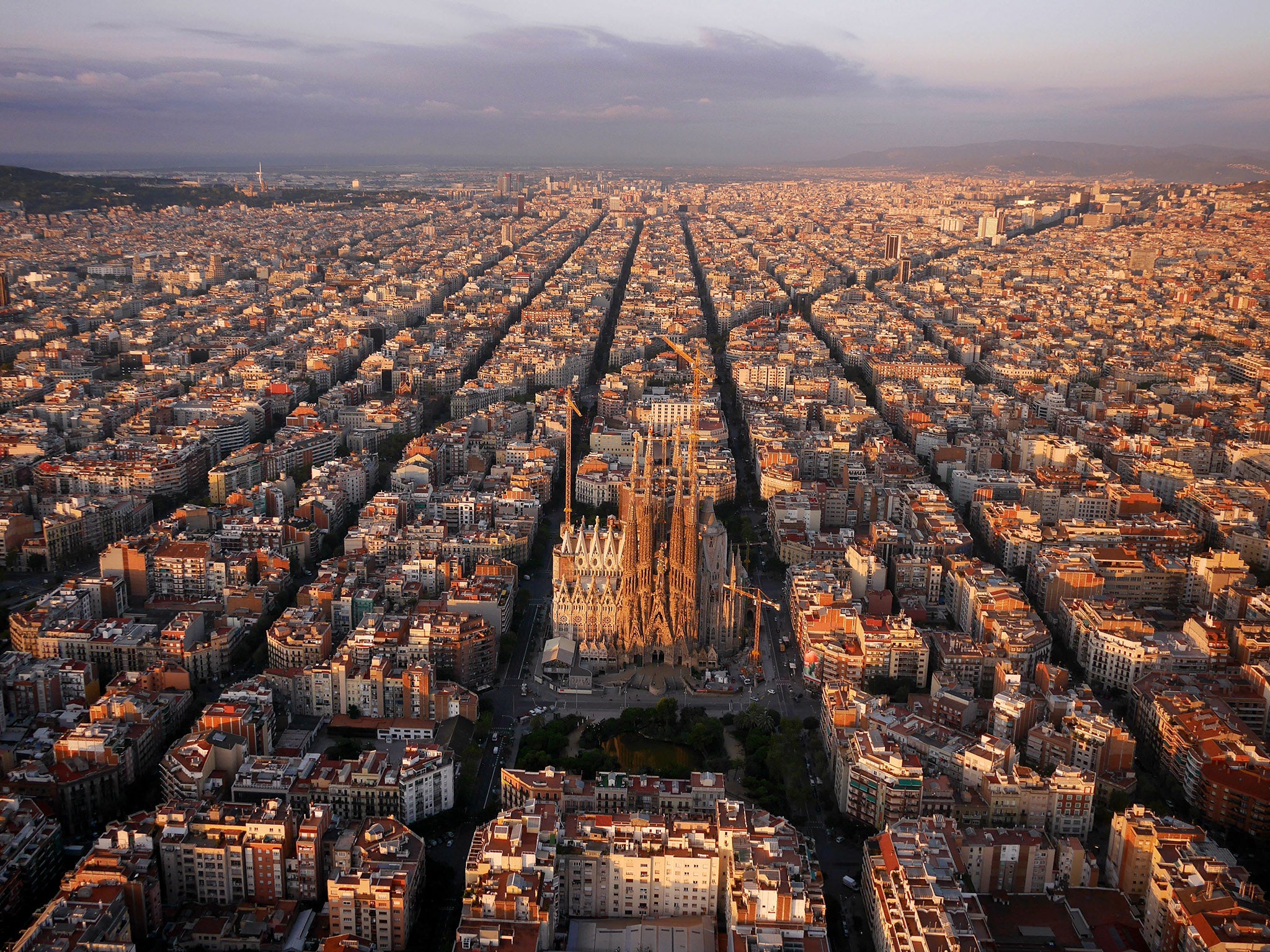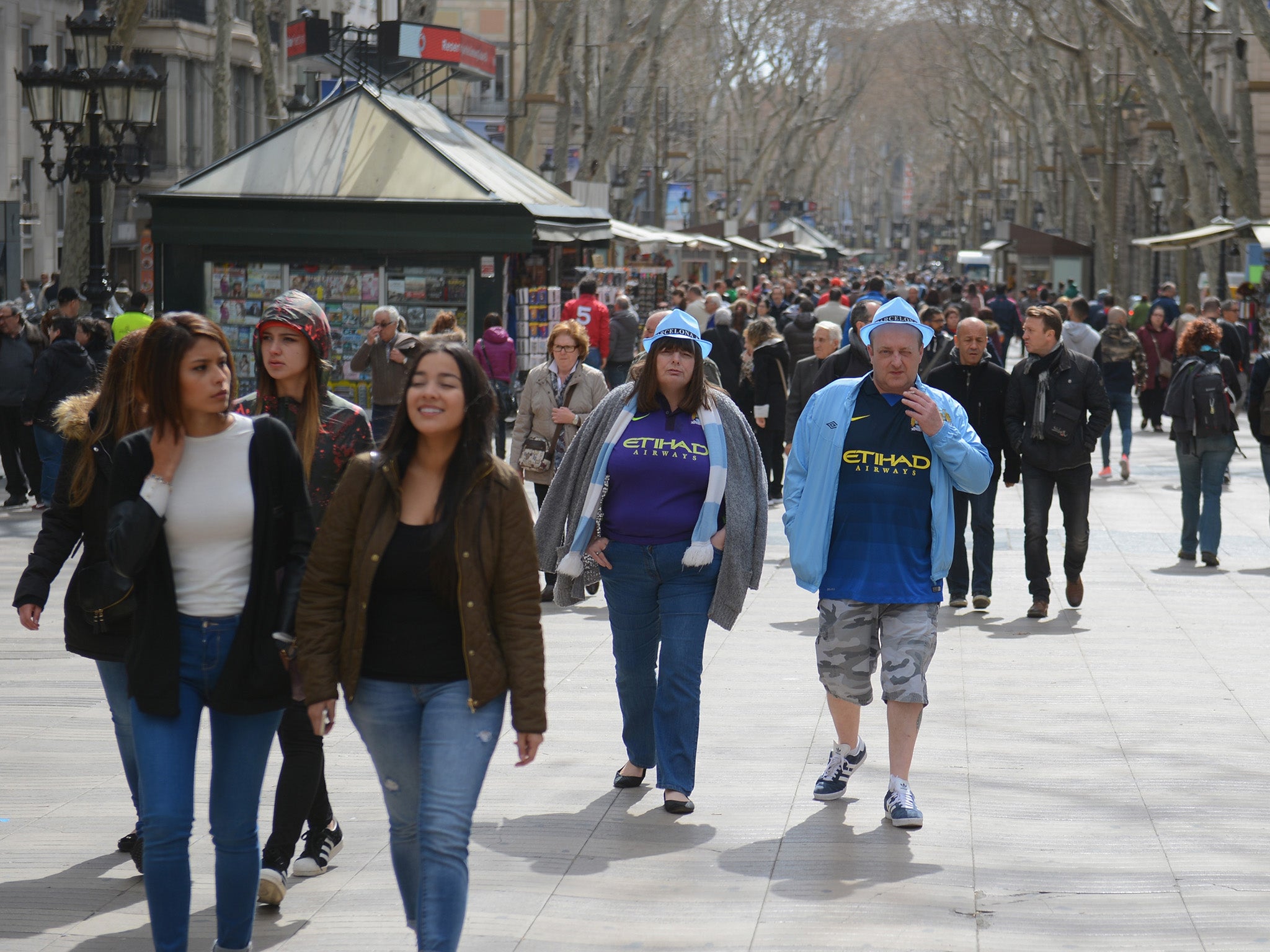Barcelona to ban tourists from driving in parts of the city
New plan will mean only local residents will be allow to drive in specially designated 'citizen spaces'

Your support helps us to tell the story
From reproductive rights to climate change to Big Tech, The Independent is on the ground when the story is developing. Whether it's investigating the financials of Elon Musk's pro-Trump PAC or producing our latest documentary, 'The A Word', which shines a light on the American women fighting for reproductive rights, we know how important it is to parse out the facts from the messaging.
At such a critical moment in US history, we need reporters on the ground. Your donation allows us to keep sending journalists to speak to both sides of the story.
The Independent is trusted by Americans across the entire political spectrum. And unlike many other quality news outlets, we choose not to lock Americans out of our reporting and analysis with paywalls. We believe quality journalism should be available to everyone, paid for by those who can afford it.
Your support makes all the difference.Barcelona will ban tourist traffic from 60 per cent of its roads in a bid to tackle pollution and accidents.
Plans announced by Barcelona City Council will begin creating “citizen spaces” where only local residents’ car will be able to travel from 2017 in order to “reclaim public space for the people”.
The new scheme will be trialled in the Eixample neighbourhood in the city centre before being expanded northwards in the neighbourhoods of Santi Marti and Gracia.
It will be based on the grid pattern design dreamed up by Catalan engineer Ildefons Cerdà who was tasked with expanding the city outside its medieval walls in 1850s after it went through a population explosion during the industrial revolution.
The Eixample district was originally arranged in superilles (superblocks) - mini neighbourhoods of houses with green spaces in the middle - to improve public health and ensure that the population expanded evenly.
But with the arrival of private cars, the grid pattern meant vehicles criss-crossed the city and have contributed to a public health crisis they were designed to solve.
According to several scientific studies, air pollution causes an estimated 3,500 premature deaths a year in the city of 3.2m people.
Barcelona and its 35 surrounding areas regularly breach of EU-mandated levels for nitrogen dioxide (NO2).

The local Environment Epidemiology Agency found that if the city’s NO2 levels were brought down to the level permitted by the EU an estimated 1,200 deaths could be reduced.
Around one if five of its children are estimated to be overweight or at risk of becoming so due to a sedentary lifestyle, the Guardian reports.
The city only has 6.6sq ft of green space per resident - compared with 27 sq ft per resident in London which has nearly three times the population.
The new citizen spaces will consist of nine existing superblocks on the grid.
All vehicular traffic will then be restricted to the outer perimeter of the grid and local residents will be able to apply for permits to travel in between at a reduced speed limit.
In the details of the plans, published on the council’s website, it said: “The City Council advocates a more sustainable city model that allows us to face the challenge of improving the quality of life of people as well as making the city more livable and more healthy.

“Within this framework, the Municipal Government will set as priorities combat levels of air pollution, noise produced by traffic, road accident rates and lack of green spaces.
“Today travel in private vehicles account for 20 per cent of all journeys in the city but the space dedicated to this means of transport is around 60 per cent”.
The council says it will provide an initial €10m (£7.7m) investment in the project which they hope will reduce road traffic by 21 per cent within two years.
Join our commenting forum
Join thought-provoking conversations, follow other Independent readers and see their replies
Comments